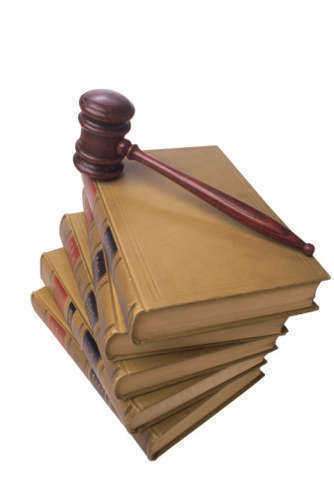
Bank Foreclosure Listings: A Wealth Of Opportunities For Savvy Buyers
Introduction
Bank foreclosure listings have become a goldmine for smart investors and homebuyers looking for lucrative deals on real estate. These listings provide a unique opportunity to purchase properties that have been repossessed by banks due to the previous homeowner’s failure to make mortgage payments. This article delves into the significance of bank foreclosure listings, their advantages, and tips for maximizing potential returns on investment.
Understanding Bank Foreclosure Listings
A bank foreclosure listing is a comprehensive inventory of properties that have gone through the foreclosure process and are now owned by financial institutions such as banks. These listings typically include details about the property’s location, size, condition, foreclosure stage, and sometimes even the estimated market value.
Advantages Of Bank Foreclosure Listings
1. Below Market Value: One of the most enticing advantages of bank foreclosure listings is the opportunity to purchase properties below their market value. Banks are primarily interested in recovering their losses quickly and may offer substantial discounts on foreclosed properties to attract prospective buyers.
2. Diverse Investment Options: Bank foreclosure listings offer a wide array of investment options, spanning residential, commercial, and industrial properties, presenting opportunities for both long-term investors and those interested in renovation and resale.
3. Enhanced Profit Potential: Buying properties at a discounted price through bank foreclosure listings can lead to significant profit margins when the property is resold or rented out. Successful investors meticulously analyze market trends, make strategic acquisitions, and take advantage of available financing options to maximize returns.
Tips For Maximizing Investment Returns
1. Research and Due Diligence: Conduct thorough research on the properties listed, paying close attention to the neighborhood, market trends, comparable sales, and any potential legal or financial encumbrances. Hiring a professional home inspector to assess the condition of the property can provide valuable insights.
2. Financing Options: Explore different financing options to leverage your investment and optimize returns. Some banks may offer preferential loan terms on their foreclosure properties, making it easier for buyers to secure financing.
3. Develop Relationships with Local Banks: Building relationships with local banks and financial institutions can give you an edge in accessing foreclosure listings even before they hit the open market. Networking with real estate professionals and attending foreclosure auctions can also provide valuable information and opportunities.
4. Engage with Experienced Professionals: Partnering with experienced real estate agents, attorneys, or property managers can help navigate the complex legal aspects associated with purchasing foreclosed properties. Their expertise can safeguard against potential pitfalls and streamline the transaction process.
Conclusion
Bank foreclosure listings have gained popularity among investors and homebuyers for their potential to unlock significant discounts and attractive investment prospects. By understanding the nuances of these listings, conducting thorough due diligence, and leveraging the expertise of real estate professionals, buyers can take advantage of this real estate market segment for optimal returns on their investments.
Guide To Bank Foreclosure Listings
Today’s real estate market is full of foreclosure properties. Many first-time homebuyers and investors are eagerly searching bank foreclosure listings in search of a deal on a newly foreclosed-upon property or an interesting pre-foreclosure listing. This guide will help you to understand why foreclosed properties are so inexpensive, some things to look out for when buying foreclosed properties, and ways to find foreclosure listings through local and national sources.
What You Should Know About Foreclosed Properties
If a house has been foreclosed upon, it means that the owner did not continue paying his or her payments. Bank foreclosure listings typically list houses where the process of foreclosure is so advanced that it is likely the house will be foreclosed upon and vacant in the near future. However, it is important to remember that not all foreclosure listings are vacant and ready to move into right away (more on that in a minute).
What’s more, bank foreclosure listings are sometimes relatively bare-bones in their description of a house and its defects. You may think you’ve found a bargain, only to find out that the house is being sold as-is and has several cosmetic or even structural problems. You should research bank foreclosure listings extensively before deciding to purchase a foreclosed upon house. What seems like a good deal could turn out to be a very expensive mistake.
Pre-Foreclosure Listings
Not all bank foreclosure listings are for homes that have already been repossessed by a bank. Some are ony for homes where the owner has fallen into default and is likely to have his or her home foreclosed upon. These bank foreclosure listings are called “pre-foreclosure listings.” Not all houses listed as pre-foreclosure listings will ever be for sale.
The banks find it advantageous to list these properties in order to sell them as quickly as possible after a foreclosure action. However, it is best to remember if you are seriously contemplating a pre-foreclosure listing that in many states, the foreclosure process can take many months, and you may not be able to move in for some time.
Bank Foreclosed Homes (REO Properties)
Homes that are already foreclosed upon and auctioned off are called REO properties. These are properties that are sometimes ready to move into, and are already vacant. You may wish for an inspection of these houses, but you will not risk the house being taken off the market in the way you do when looking at pre-foreclosure listings.
Sources for Bank Foreclosure Listings
While some websites list bank foreclosures and pre-foreclosures, the best way to find properties that not everyone is looking at may be to go to local mortgage lenders and ask directly for their listings. This kind of legwork may take more time, but it’s also more likely to generate a bargain find. Some web listings may be good, but others use old listings. If you find a site you believe has good listings, you can check how up to date they are with the bank that owns the property.



























